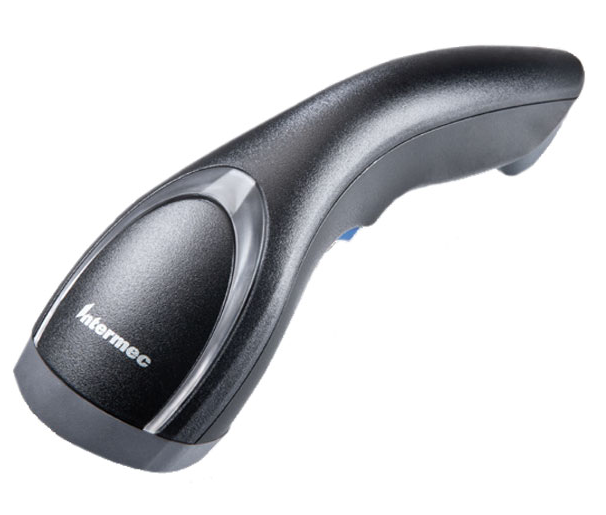Scanning at the Point-of-Sale: Keys to Improving the Customer Experience

Industry Need
What can customers get in your stores that they can’t get online?
Retailers who cannot easily answer this question risk losing business to e-commerce competitors – more than 3,100 U.S. retail stores closed in 2011 and more than 5,000 more are projected to close in 2012, according to published industry reports. Retailers who are answering the question successfully are focusing on creating an excellent customer experience. They are creating and enhancing customer loyalty programs, offering new services, seamlessly merging sales channels and providing exceptional customer service.
Creating a positive customer experience also requires satisfying the desire for immediacy. Successful retailers have products available for customers to touch, try and take home right away, without having to wait for shipment.
To create this experience, retailers need to keep their products on the shelves and their staff on the floor. It requires a workforce that is knowledgeable, flexible and highly responsive. Retailers should demand the same from their equipment.
Just as the requirements for successful retailing have changed, so have the requirements for retail scanners. The ability to read U.P.C. codes at the point of sale is not enough to create differentiation or add value. Retailers also need to read QR Codes and other two-dimensional (2D) bar codes used in promotions, quickly and conveniently process customer loyalty cards and even read coupon and loyalty codes displayed from the screen of a customer’s cell phone. Scanners need to meet these needs while making the checkout process as quick and convenient as possible.
One thing hasn’t changed: retailers still need to tightly control costs. They can’t keep adding new equipment to meet new needs. The more jobs a scanner can perform, the more value it provides.
Intermec Solution
Handheld imagers give retail store associates the ability to efficiently do their jobs wherever work requires or customers desire. When paired with a smart printer, a handheld imager can support many point-of-sale, customer service, shelf management and inventory control operations.
Imagers can read U.P.C. codes on products for checkout and returns processing, 2D bar codes on loyalty cards and drivers licenses, bar code shelf labels used for inventory control, ordering and price auditing, and even the shipping labels on cartons and pallets. Plus, 2D imagers can read much more than bar codes. They can take pictures, document the condition of items at the time of sale or return, even scan a customer’s drivers license for check approval or proof-of-age documentation.
Handheld imagers can communicate cordlessly to POS systems, tablet computers, smart phones, kiosks, displays, mobile printers and other Bluetooth devices, giving retailers the flexibility to develop efficient and creative new work processes. Possible uses include:
- Fast and convenient checkout – Use the imager in a stand for hands-free checkout scanning, remove it to read heavy or bulky items in the customer’s cart, and use the same device to scan the customer’s loyalty card or driver’s license for check authorization.
- Assisted shopping – Associates and managers can use Bluetooth-enabled handheld imagers to assist customers on the floor by scanning product or shelf labels to check inventory held in the back room or other locations, or read QR Codes to call up promotional websites on in-store displays.
- Line busting – Pair the scanner with a mobile printer to process checkouts and returns anywhere in the store. Variations range from using mobile associates to pre-scan goods while customers are waiting in line and issuing a bar-coded receipt to speed checkout once at the register, all the way to complete mobile checkout where payment is processed and a receipt is printed.
- Mobile/temporary POS – During peak periods or special events like sidewalk sales, imagers that can read U.P.C. codes, loyalty cards, forms and drivers licenses provide the flexibility needed to create temporary point-of-sale stations.
- Shelf management – Now a scanner that is used in a cradle at the POS station by day can be used in the aisles at night for shelf inventory, cycle counting, price auditing, shelf labeling and more.
- Back office – Imagers can read bar codes in wide range of sizes and formats. Take advantage by using handheld imagers to automate receiving and back-room inventory counting by scanning shipping labels on cases at cartons. Document damaged shipments to prevent disputes by taking a time-stamped picture during receiving to show the condition of delivered goods.
Retailers can do all this and more with one handheld imager, without having to purchase and support several different types of scanners and train their staffs how to use them.
Products
SG20 handheld imager. The SG20 is available with the industry’s fastest 2D imager, capable of reading all common linear and two-dimensional (2D) bar code formats. With the SG20, cashiers do not have to aim to please – the rapid omnidirectional scanner reads bar codes in any orientation, doesn’t have to be precisely aimed or focused, and decodes even low-quality symbols. Reading the symbol right on the first try saves time and frustration for customers and clerks alike. The imager can also take pictures and be used to capture data from forms, drivers licenses and customer loyalty cards. The SG20 is available in Bluetooth cordless or tethered (cabled) versions, and all models support USB, RS-232 and keyboard wedge interfaces for easy communication to POS systems, PCs, digital scales, tablet computers, PDAs, smart phones, mobile printers and more. Use it in the hands-free stand for POS scanning, detach it to read bulky items and take it on the go for shelf management, line busting, temporary POS, receiving and other applications.




